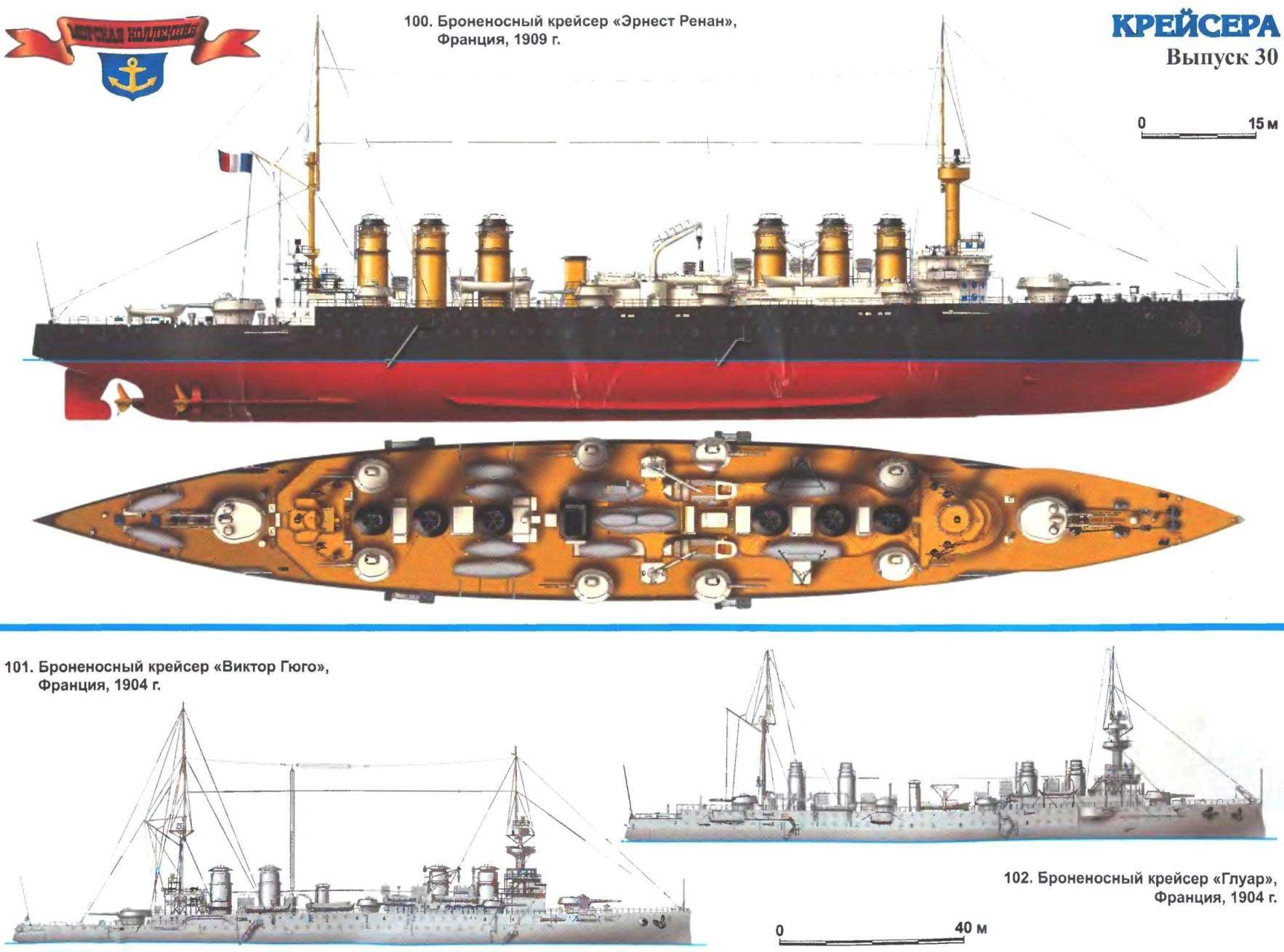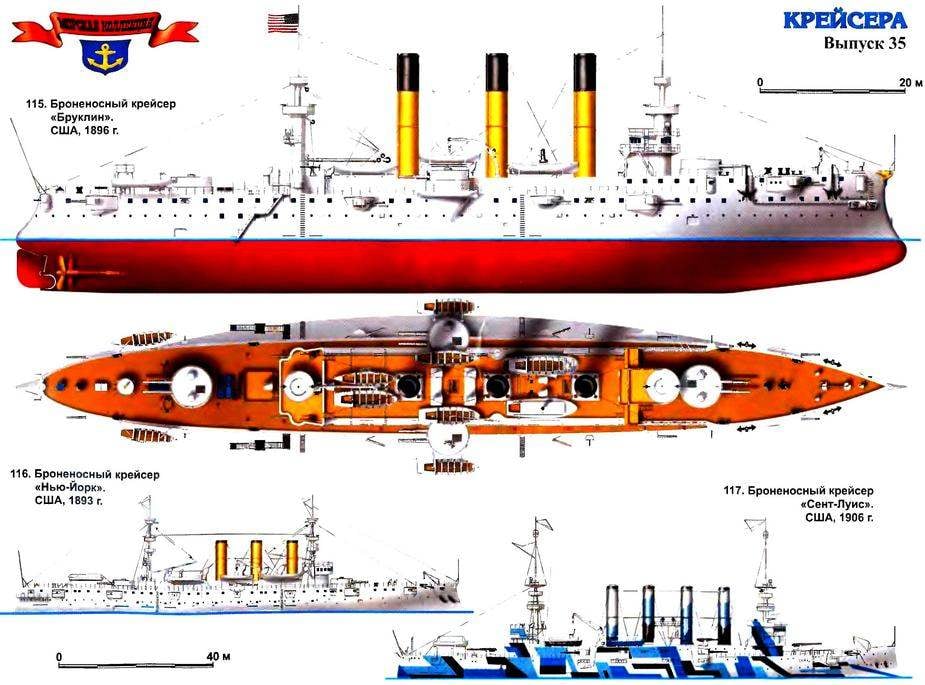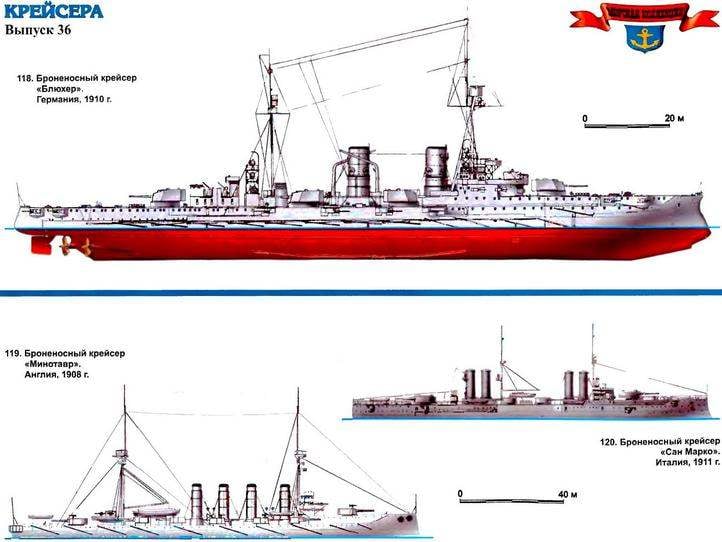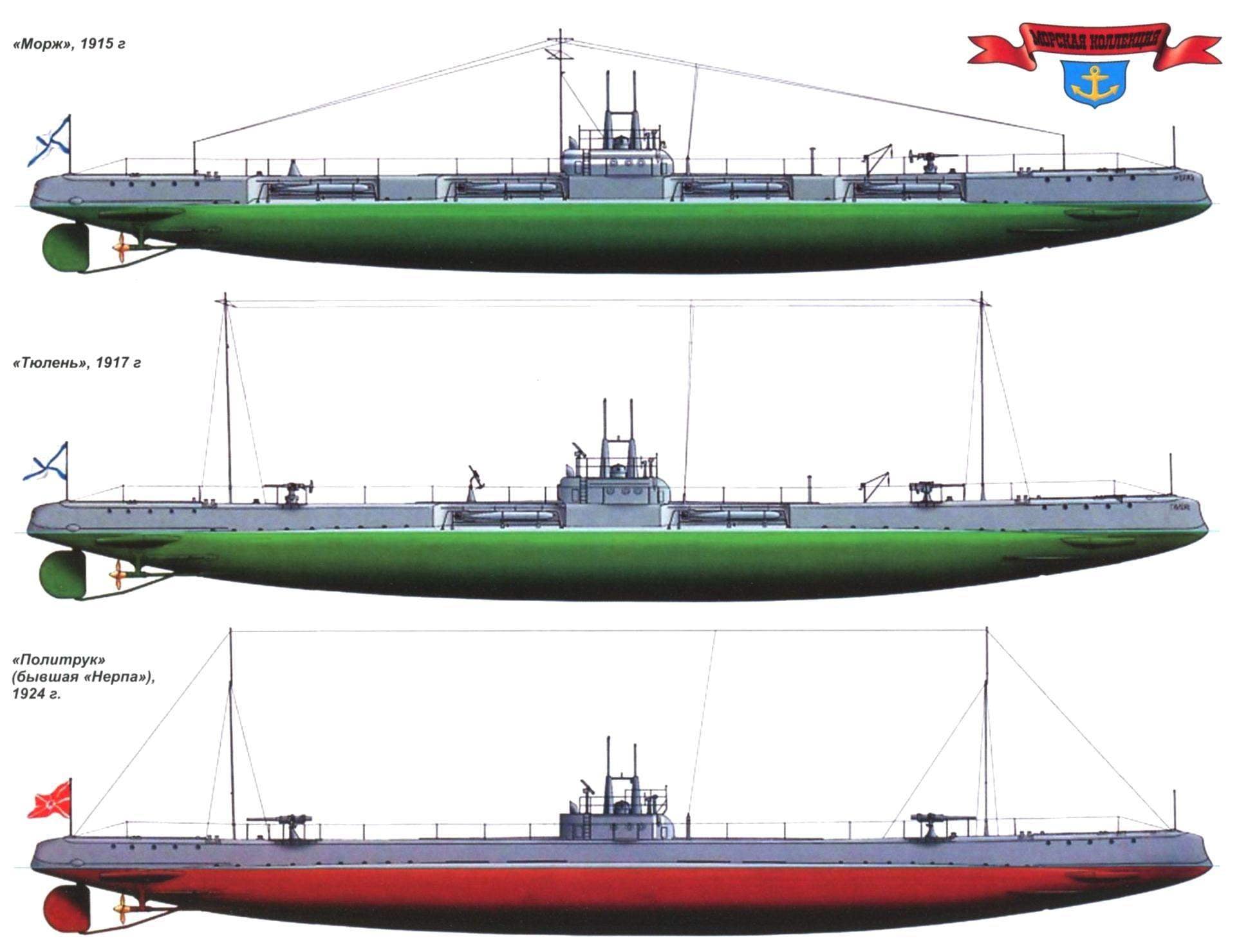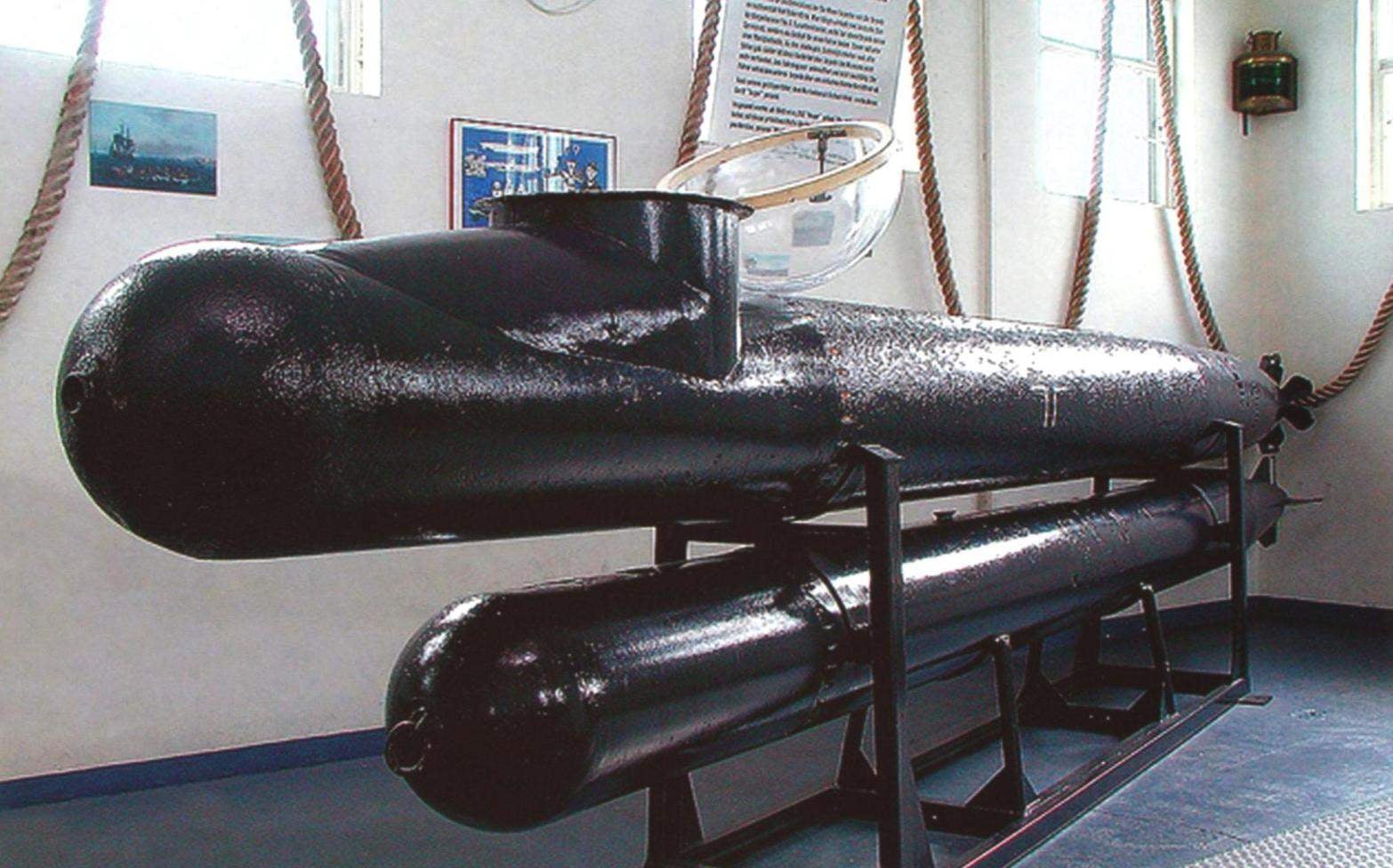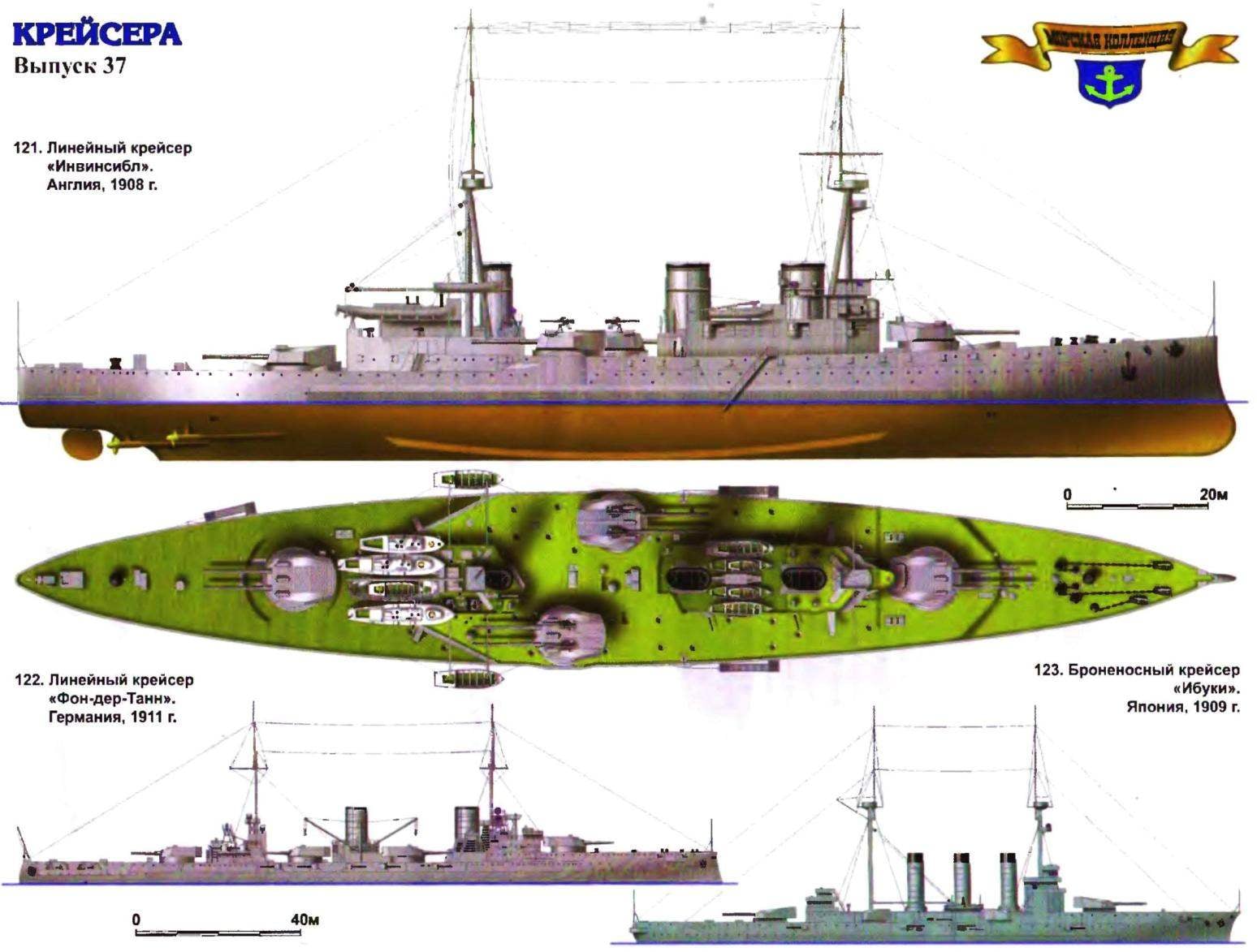 Ministerial reshuffle in France in the 90-ies of the XIX century in the absence of common ideas in the creation of the Navy not only politicians, but also among experts has led to what could cause any mess of Sharp change of course has impact on all classes of ships, but the most affected was exactly cruiser.
Ministerial reshuffle in France in the 90-ies of the XIX century in the absence of common ideas in the creation of the Navy not only politicians, but also among experts has led to what could cause any mess of Sharp change of course has impact on all classes of ships, but the most affected was exactly cruiser.
Marine
OVERSEAS HEAVYWEIGHTS
 One of the most curious facts from the history of shipbuilding the United States of America is that their first armored cruiser in essence was neither domestic development or cruiser Sensitive the growth of major Latin American fleets, especially Brazilian, in the late 80-ies of the XIX century led to the rather bizarre situation the Most strong economically country in the world inferior (albeit formally) for naval power very backward and sparsely populated neighbors (even distant) Position of the American politicians seemed completely intolerant and in August, 1886 act of Congress approved the construction of two well-armoured and heavily armed warships One of them was an ordinary battleship “Texas” and the second is classified as armored cruiser “Maine”, the designation of ACR1 is (1 Armoured cruiser — armored cruiser No. 1) actually, it was a slightly modified Brazilian “Riachuelo”, built in England and was considered a good version of “battleship for the poor” (an Appropriate choice for one of the two richest countries in the world) A thick 12-inch armor belt of geroevskoe steel and 17-node speed 6680-ton ship is clearly testified to his “linear” mission Four desyatidyuymovy located in two diagonally decently armored 203 mm slabs of the towers resembled “big brother” But an auxiliary gauge has been very modest six 152/30 mm guns, but a half dozen small-caliber skorostrel.
One of the most curious facts from the history of shipbuilding the United States of America is that their first armored cruiser in essence was neither domestic development or cruiser Sensitive the growth of major Latin American fleets, especially Brazilian, in the late 80-ies of the XIX century led to the rather bizarre situation the Most strong economically country in the world inferior (albeit formally) for naval power very backward and sparsely populated neighbors (even distant) Position of the American politicians seemed completely intolerant and in August, 1886 act of Congress approved the construction of two well-armoured and heavily armed warships One of them was an ordinary battleship “Texas” and the second is classified as armored cruiser “Maine”, the designation of ACR1 is (1 Armoured cruiser — armored cruiser No. 1) actually, it was a slightly modified Brazilian “Riachuelo”, built in England and was considered a good version of “battleship for the poor” (an Appropriate choice for one of the two richest countries in the world) A thick 12-inch armor belt of geroevskoe steel and 17-node speed 6680-ton ship is clearly testified to his “linear” mission Four desyatidyuymovy located in two diagonally decently armored 203 mm slabs of the towers resembled “big brother” But an auxiliary gauge has been very modest six 152/30 mm guns, but a half dozen small-caliber skorostrel.
UNCLAIMED PERFECTION
 Still thundering salvos of the Russo-Japanese war, an armored cruiser of Kamimura had to prove his suitability to participate in a line battle, along with the “senior comrades” — the Armadillo, and on the stocks of all the major naval powers had already laid the ships of this class, belonging to a new generation. Designers “squeezed” from all the extra projects and used the latest advances of modern technology, making their products more and more rational and powerful. In fact, the armored cruiser has ceased to be a cruiser in the old sense of the word — single by raider, intended to hunt for enemy merchant vessels. Huge, armored giants, carrying more powerful artillery, which was definite overkill for the intended objectives. In the naval doctrines of the cruisers now are basically given the role of scouts in the squadron, fast avant-garde is able to disperse the enemy’s patrols, giving them the opportunity to observe the deployment of private line squadrons. In fact, the last armored cruiser was created on the principle of “ship vs ship”.
Still thundering salvos of the Russo-Japanese war, an armored cruiser of Kamimura had to prove his suitability to participate in a line battle, along with the “senior comrades” — the Armadillo, and on the stocks of all the major naval powers had already laid the ships of this class, belonging to a new generation. Designers “squeezed” from all the extra projects and used the latest advances of modern technology, making their products more and more rational and powerful. In fact, the armored cruiser has ceased to be a cruiser in the old sense of the word — single by raider, intended to hunt for enemy merchant vessels. Huge, armored giants, carrying more powerful artillery, which was definite overkill for the intended objectives. In the naval doctrines of the cruisers now are basically given the role of scouts in the squadron, fast avant-garde is able to disperse the enemy’s patrols, giving them the opportunity to observe the deployment of private line squadrons. In fact, the last armored cruiser was created on the principle of “ship vs ship”.
“DOMESTIC PRODUCT”
 We have already talked about the commitment of the leadership of the Russian Navy, since the beginning of the first underwater vessels in its composition, to rely on their own development. It is worth noting that the transition from foreign models to domestic products proved to be very difficult, although some groundwork was there, and from the very beginning of the century. In 1900 the Naval Technical Committee (MTK) has created a special Commission, composed of the chief designer of the Russian submarines naval engineer I. G. Bubnov and teacher of Mine officer class M. N. Beklemishev, who visited all the major countries of “trendsetters” in the underwater case, including USA, England, Germany and Italy. (He later was in charge of acceptance of boats “the German series” – “Carp”. “Flounder” and “Carp”, and in the United States rather studied the works of Holland.)
We have already talked about the commitment of the leadership of the Russian Navy, since the beginning of the first underwater vessels in its composition, to rely on their own development. It is worth noting that the transition from foreign models to domestic products proved to be very difficult, although some groundwork was there, and from the very beginning of the century. In 1900 the Naval Technical Committee (MTK) has created a special Commission, composed of the chief designer of the Russian submarines naval engineer I. G. Bubnov and teacher of Mine officer class M. N. Beklemishev, who visited all the major countries of “trendsetters” in the underwater case, including USA, England, Germany and Italy. (He later was in charge of acceptance of boats “the German series” – “Carp”. “Flounder” and “Carp”, and in the United States rather studied the works of Holland.)
DISGUISED BATTLESHIPS
 The fourteenth may 1905 in the Tsushima Strait in the last General naval battle of the Russo-Japanese war met 2nd Pacific squadron and the combined fleet of Japan In a six-hour battle killed four Russian battleship, and other ships were damaged, the Fate of the battle practically decided the evening of that fateful day and night torpedo attack and surrender of the remnants of the squadron in the morning just put the final point. On the Tsushima written many books and articles, however, one obvious fact is not noteworthy authors. The fact that the Japanese “line of battle”, strictly speaking, 2/3 were not “linear”- of the 12 units were part of the units and Kamimura, eight were armored cruisers. And these ships made a notable contribution to one of the most brilliant and decisive victories at sea in the XX century.
The fourteenth may 1905 in the Tsushima Strait in the last General naval battle of the Russo-Japanese war met 2nd Pacific squadron and the combined fleet of Japan In a six-hour battle killed four Russian battleship, and other ships were damaged, the Fate of the battle practically decided the evening of that fateful day and night torpedo attack and surrender of the remnants of the squadron in the morning just put the final point. On the Tsushima written many books and articles, however, one obvious fact is not noteworthy authors. The fact that the Japanese “line of battle”, strictly speaking, 2/3 were not “linear”- of the 12 units were part of the units and Kamimura, eight were armored cruisers. And these ships made a notable contribution to one of the most brilliant and decisive victories at sea in the XX century.
THE GERMAN-CONTROLLED TORPEDOES
 The development of guided torpedoes to sabotage units of the German fleet was conducted in parallel with the creation of the midget submarines. The first model of this weapon was designed in 1943 – 1944 chelovekovedenija torpedo “Neger”. The name came from the surname of the inventor – engineer of the fleet of Richard Mora. (“Mor” is a polite form of the German word “nigger” Neger). Moore worked at the torpedo testing station in Eckenforde in the Baltic, near Kiel. On the basis of standard torpedoes, he created a single machine that was easy to produce and used against allied ships off the coast in the event of their landing on the mainland.
The development of guided torpedoes to sabotage units of the German fleet was conducted in parallel with the creation of the midget submarines. The first model of this weapon was designed in 1943 – 1944 chelovekovedenija torpedo “Neger”. The name came from the surname of the inventor – engineer of the fleet of Richard Mora. (“Mor” is a polite form of the German word “nigger” Neger). Moore worked at the torpedo testing station in Eckenforde in the Baltic, near Kiel. On the basis of standard torpedoes, he created a single machine that was easy to produce and used against allied ships off the coast in the event of their landing on the mainland.
SKILLFUL IMITATION
 Sometimes at sea the second tier questions the defense put unsoluble problems, missing that great powers have just in principle. So, Spain, its naval policy dictated not by economic interests, not the king, but solely the fact of which government is in power: liberals or conservatives. As usual, both competing office Radel for a strong and prosperous Spain, but ways to achieve this goal, they sometimes differ radically.
Sometimes at sea the second tier questions the defense put unsoluble problems, missing that great powers have just in principle. So, Spain, its naval policy dictated not by economic interests, not the king, but solely the fact of which government is in power: liberals or conservatives. As usual, both competing office Radel for a strong and prosperous Spain, but ways to achieve this goal, they sometimes differ radically.
“EASILY TRANSPORTED PROPERTY”
 We left Russia and its underwater aspirations in a difficult moment for the country, alas, is only the first in suffering the twentieth century. Broke out in 1904, the Russo-Japanese war found Russia in a far-from-ready position. Moreover, these words can be attributed to the submarine fleet. Not just existed, there was even no development plans, no more or less suitable for “reproduction” prototype. However, the Naval Ministry had to sign an agreement with the former firm of Holland “electric boat”, for the construction at Nevsky shipyard in St. Petersburg a series of five more units in the fall of 1903. However, the chosen system (the hull was built in Russia, the equipment arrived from the US), quite reasonable for such a new business in peacetime, during the war, became a real brake. In the end, even the head “Pike” delivered to Vladivostok a few months after the fighting ended. Late to the boat from another American lake, also assembled in Russia under the scheme of peace. A similar fate befell an earlier project hollandskyi “Beluga”. The only submarine that arrived in the far East to the Tsushima defeat, became overbought at the lake’s “Protector”, aka “Sturgeon”. But he did not have time to act before the end of the war.
We left Russia and its underwater aspirations in a difficult moment for the country, alas, is only the first in suffering the twentieth century. Broke out in 1904, the Russo-Japanese war found Russia in a far-from-ready position. Moreover, these words can be attributed to the submarine fleet. Not just existed, there was even no development plans, no more or less suitable for “reproduction” prototype. However, the Naval Ministry had to sign an agreement with the former firm of Holland “electric boat”, for the construction at Nevsky shipyard in St. Petersburg a series of five more units in the fall of 1903. However, the chosen system (the hull was built in Russia, the equipment arrived from the US), quite reasonable for such a new business in peacetime, during the war, became a real brake. In the end, even the head “Pike” delivered to Vladivostok a few months after the fighting ended. Late to the boat from another American lake, also assembled in Russia under the scheme of peace. A similar fate befell an earlier project hollandskyi “Beluga”. The only submarine that arrived in the far East to the Tsushima defeat, became overbought at the lake’s “Protector”, aka “Sturgeon”. But he did not have time to act before the end of the war.
“MODEST”, BUT DANGEROUS
 Creating your armored cruisers, German Naval Ministry, headed by Admiral Tirpicz was faced with the problem, at first glance seeming ridiculous: what to do with them? In common thinking, expensive and big but not enough fast ships really were little demand. For reconnaissance and raiding actions in the oceans of their force seemed excessive, but the speed they are clearly not enough. Armored “knights” it would be reasonable to support “light infantry”: small, cheap and numerous enough ships with decent speed and range.
Creating your armored cruisers, German Naval Ministry, headed by Admiral Tirpicz was faced with the problem, at first glance seeming ridiculous: what to do with them? In common thinking, expensive and big but not enough fast ships really were little demand. For reconnaissance and raiding actions in the oceans of their force seemed excessive, but the speed they are clearly not enough. Armored “knights” it would be reasonable to support “light infantry”: small, cheap and numerous enough ships with decent speed and range.
AND THEN CAME JACK…
 In the last issue we talked about last representatives of cruisers with over 20 years of ex-one of the most important and revered ships in the fleets of all the major Maritime powers. The class that developed it seems to be quite natural and successful, but which is completely and permanently disappeared from the plans of shipbuilders in just two to three years.
In the last issue we talked about last representatives of cruisers with over 20 years of ex-one of the most important and revered ships in the fleets of all the major Maritime powers. The class that developed it seems to be quite natural and successful, but which is completely and permanently disappeared from the plans of shipbuilders in just two to three years.
